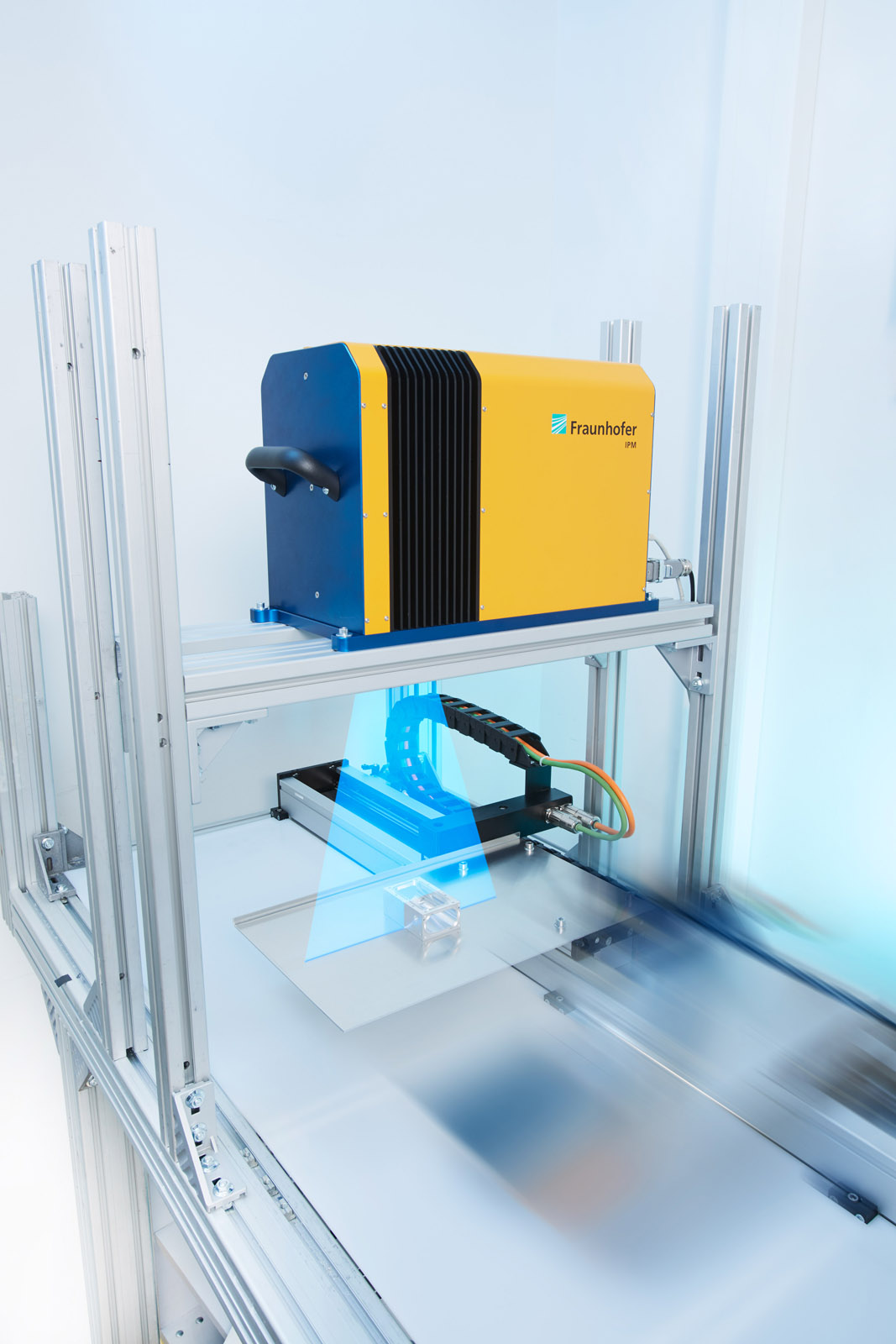Tiny specks of dirt or grease left on components during manufacturing processes can have disproportionately serious effects, such as ruining the effectiveness of seals between components. Despite advances in quality control and inspection, it has not been possible to find a way to inspect every component on an assembly line for every trace of contaminant. The Fraunhofer innovation, developed at the Institute for Physical Measurement Techniques (IPM) in Freiburg, now promises to change that.

The technique uses an inline ultraviolet laser, which scans across the surface of components 200 times per second, in a point-by-point grid pattern. Any contaminants caught in that grid — whether specks of grease, residues of organic cleaning fluids or stray fibres — reflect light in the visible fluorescence spectrum.
The system incorporates a detector that responds only to the specific fluorescence wavelengths, ignoring all other reflections: this not only identifies the presence of contaminants, but because of the scanning grid pattern, reports precisely where they are. “The outstanding spatial resolution of this system enables us to identify even the slightest deposits or films of less than ten milligrams per square meter,” said Andreas Hofmann, business development manager at IPM. The system can examine every metallic component in-line without adding any time to the production process, he added.
The system can also detect fragments of metal that may have stuck to components in previous machining steps. “The preprocessed components are cleaned using water or compressed air. Any remaining chips are contaminated with oil or other fluorescent substances,” added Hofmann.
The Fraunhofer team is now undertaking further studies to adapt the techniques for non-metallic components, and is planning to present the system at a specialist cleaning exhibition in Stuttgart later in October.




Poll: Should the UK’s railways be renationalised?
I _do_ remember British Rail - and that it was <i>literally</i> a national joke https://youtu.be/zV2lmSDKvO8